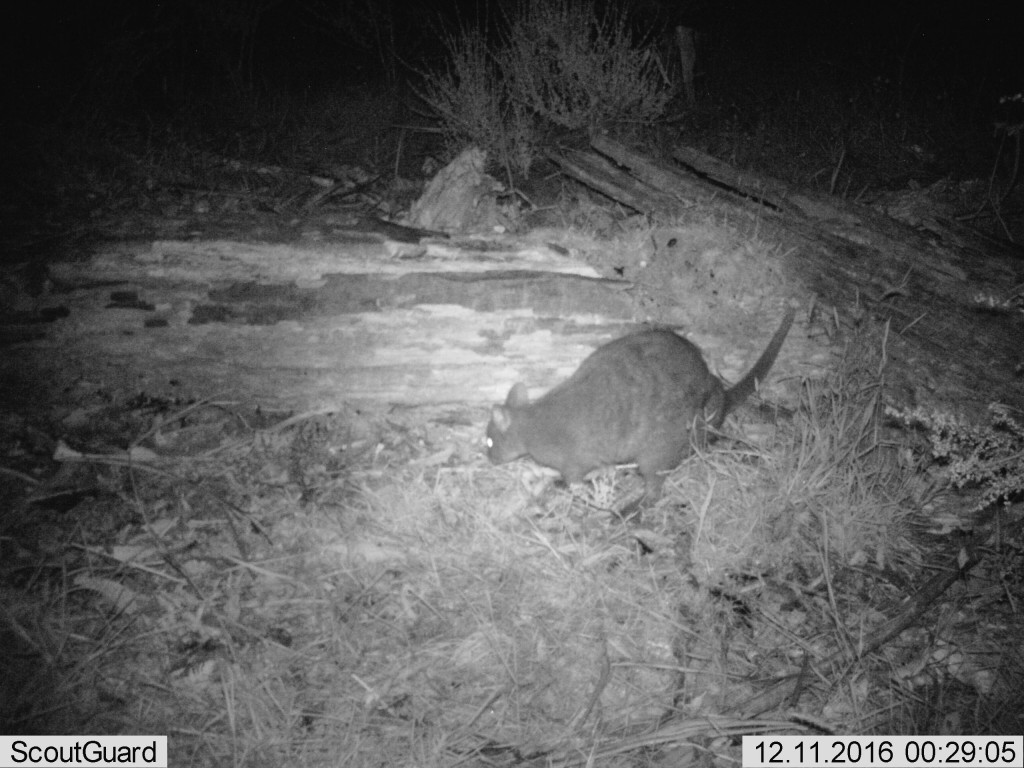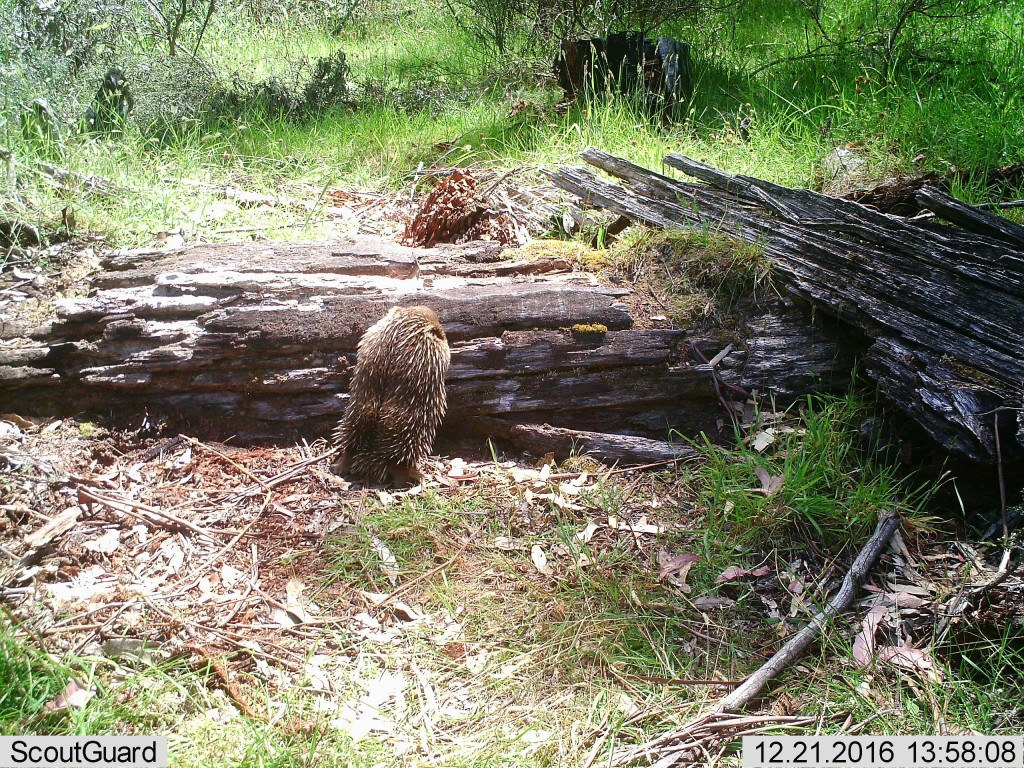In December 2016 we participated in a community wildlife monitoring program, run as a collaboration between the Tasmanian Land Conservancy, Kingborough Council, the Bruny Island Environment Network, Bruny Island Community Association, Private Land Conservation Program, NRM South, Derwent Catchment NRM, BirdLife Australia and the University of Tasmania. The idea is to establish a network of long-term wildlife monitoring sites on private land, to figure out what lives where and how our native animal populations are faring over time.
For us, this meant setting up a wildlife monitoring camera for a few weeks, and taking an audio recording of bird calls one morning for about 20 minutes. At the end of the period we went through the photos, deleted the irritatingly large number of photos of moving shadows and vegetation, and recorded the actual wildlife spotted in a spreadsheet. The same thing is being done on many different properties over a wide area. The results of the research from this pilot program should be available some time this year (2017), and hopefully another round will be done in future at the same sites to see what’s changed over time.
Aside from the small family of skinks living in the log the camera was pointed at, we got photos of some combination of pademelons, Bennetts wallabies, spotted-tailed quolls, eastern-barred bandicoots, bettongs, brushtail possums and at least one echidna. Here’s some choice shots:






…and here’s a video of the entire set of interesting photos, one frame every two seconds to make everything reasonably easy to identify:
Finally, if you’ve got a pile of JPEG images you want to turn into a video like the above, and you’re running Linux, something like this should do the trick:
# ffmpeg -f image2 -framerate 25 -r 0.5 -i %*.JPG -s 640x480 my-video-file.avi
